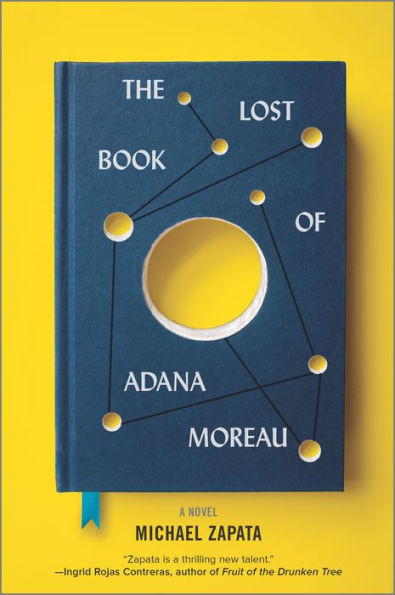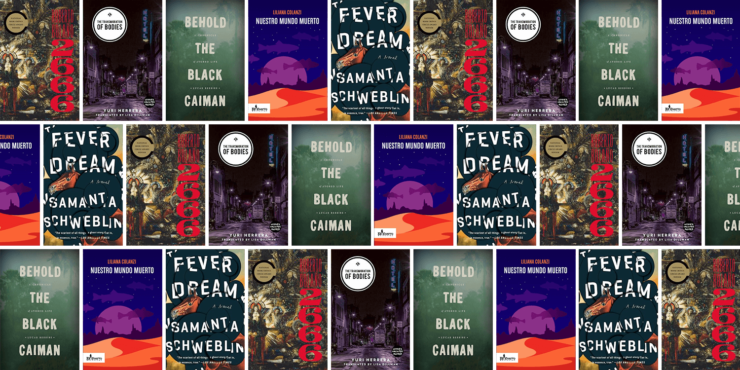In 2009, while reading Roberto Bolaño’s apocalyptic, meteoric masterpiece 2666, I was overwhelmed with the sensation that genre was being reinvented to fit an increasingly uncanny 21st century. Three romantically entangled professors set out to find an elusive, genre-bending post-war German novelist in Santa Teresa, a fictionalized version of the Mexican city of Ciudad Juárez. Instead of the writer they find an impressionistic global future: a desert city with a horizon of maquiladores, soccer matches “between a team of the terminally ill and a team of the starving to death,” “flocks of black vultures,” and a “sky, at sunset…like a carnivorous flower.”
A rich generation of young Latin American writers have been remarkably effective in revealing our era of unstable reality, and wonderfully unattached to genre when doing so.
They seem to not have only taken Bolaño’s end-of-history ideology to heart, but they have fully irradiated it in new, uneasy and dangerous ways. They’ve been steadily producing books in which genre itself blinks in and out of existence. Books that devour their readers, not the other way around. After all, how are we supposed to experience literature when late-capitalist horrors and irreversible ecological disasters become too strangely easy to recognize, when even everyday life offers visions of the end of the world? According to the eco-philosopher Timothy Morton, our 21st century problems are both “viscous and nonlocal.” A 500-year flood in Atlanta, an Amazonian oil spill, or a pandemic are all manifestations of local, new realities and also fleeting instances of a global ecological phenomenon that will last millennia. If the end of the world has already occurred, then reading the news or fiction today is a type of archeology of the future.
In “The Eye,” the opening story of Bolivian writer Liliana Colanzi’s utterly unique and otherworldly collection Our Dead World, translated with precision by Jessica Sequeira, a rotten sexual encounter sets in motion the fiery destruction of the Earth. “The boy was the Enemy her mother had always spoken of, she thought with wonder, and her own calling – now she knew it – was to open the gates of the void.” In the title story, a woman living near a Chernobyl-like disaster on Earth is selected for the “Martian Lottery,” its slogan “The greatest adventure since the discovery of America!” On Mars, she finds herself entombed by “miles of ochre-colored dunes where nothing was alive, a silent desert that breathed down your neck, eager to kill you.” After seeing the apparition of a Ural deer with “pleading eyes,” she thinks, “The body was absorbed – destroyed – by that indifference.” This is a gut-wrenching, if familiar, indigenous reflection. The axis along which almost all of colonialization orients itself is, like a collapsing ecology, pointed toward homogeny.
Last November, during Bolivia’s horrific right-wing coup, I re-read “Story with Bird,” the collection’s fiercest indictment of indigenous exploitation. A plastic surgeon, who botches an operation and goes into hiding, descends into delirium on a sugar-cane plantation where indigenous slavery is still practiced. In its telling, Colanzi replicates, echo-like and with earth-shattering effect, the stories of the indigenous Ayoreos testimonies collected by anthropologist Lucas Bessire in Behold the Black Caiman: A Chronicle of Ayoreo Life. “We ate honey. We killed fish. We were dirty…My thoughts and my memories are gone. They won’t come to me anymore. I don’t know my own story. It is done.” Shortly after Bolivia’s right-wing set aside the constitutional process and seized power under Jeanine Áñez, international agribusiness, finance, mining, and oil and gas extraction interests commenced their war plans on indigenous communities. Later, in defense of both the coup and lithium extraction on indigenous Bolivian lands, Elon Musk wrote on Twitter, “We will coup whoever we want! Deal with it!” Racist revanchism is the name of their capitalist game.
There is something both Shakespearean and current about Mexican writer Yuri Herrera’s noirish, apocalypse-teasing novel The Transmigration of Bodies, translated expertly by Lisa Dillman. A plague, swept in by Egyptian mosquitoes, terrorizes a city. There’s a pair of feuding gangster clans – the Castros and the Fonsecas – minutes away from an incandescent blood bath and each holding a dead young hostage from the other family. Then there’s The Redeemer, a tough philosophical ex-courthouse fixer, who’s called in by both families to broker an exchange of the bodies and a type of sanctified peace. But, above all, there is Fate writ so enormous, so terrible, so tethered to “sinister insects” and end-of-times, that every character is forced to yield to it. “He could sense the agitation from behind their closed doors but sensed no urgent need to get out. It was terrifying how readily everyone had accepted enclosure,” The Redeemer thinks.
When The Redeemer tells one of the mothers that each family ended up with the other’s young body by accident she remarks, “Those things just don’t happen.” This is when Herrera opens up an enigmatic but disciplined space for unreality. The unnamed Mexican city is a labyrinth and we follow The Redeemer through its shuttered, darkened streets because it all feels so damn familiar and, yet, impossible.
Buy the Book


The Lost Book of Adana Moreau
Still, these things do happen, they’re happening right now on the diminishing coasts of Bangladesh and New Orleans, where Herrera teaches at Tulane University. What yearning, death-guilt, and selves do we perceive in fiction when our very lives feel so fictional? To read Herrera is to recognize that disaster is the true infrastructure of the world.
I first read Samanta Schweblin’s masterpiece Fever Dream, translated with intuitive artistry by Megan McDowell, shortly before moving home from New Orleans to Chicago with my family. I can’t recall a novel that has unnerved me as much previously or since. The drive home took us through an end-of-empire Midwestern landscape, with half-empty towns and hypnotizing fields of corn and soybeans, reminiscent of the Argentinian countryside where Fever Dream takes place and where there are on-going reports of skyrocketing rates of cancer, miscarriages, and birth abnormalities due to pesticides. A dying woman, Amanda, lays in a hospital bed, recounting the eerie and inexorable series of events that led her there while a boy David, her disembodied interlocutor, incessantly seeks an answer to an unsettling mystery: “It’s the worms. You have to be patient and wait. And while we wait, we have to find the exact moment when the worms come into being…It’s very important, it’s very important for us all.”
The worms, part allegory, part ecological omen, form the tightening mesh of the story. A horrific interconnectedness ensues. Amanda is consumed with the concept of “rescue distance,” the ever-present, quantum calculations of risk suffered by every parent. “I spend half the day calculating it,” she says, because “sooner or later something terrible will happen.” Eventually, rescue distance fails her. And it fails David’s mother, Carla, who tells Amanda about David’s poisoning in a stream and how she takes him to a “green house” where a village healer performs a type of post-modern exorcism of souls and toxins, leaving David a stranger to her. Later, when Amanda asks about the pesticides, Carla says, “It happens, Amanda. We’re in the country, there are sown fields all around us. People come down with things all the time and even if they survive they end up strange…Strange can be quite normal.” The final, horrifying pages of Fever Dream produces a global toxic reality that swallows all others, leveling both history and genre into the flatness of a mirror, a rippling strange new self at the imminent end of the world.
In no time at all, our lives will be rendered unrecognizable, but unstable realism is also a type of return. Our literature at the end of modern life might closely resemble the one before—filled with fear of god-like ecologies, fuming ghosts, otherworldly horizons, and identity anchored not to markets or sovereign borders but myth, survival, and powerful familial bonds. Latin American writers are quite home in this unstable territory because for centuries they have been fierce conservationists of an indigenous memory before the Columbian Exchange and the unreal memory of the horrors, fevers, resistance, and tender solidarities that followed. In this way, Latin American literature continues to be prophetic. The possibilities of our current world will end and a New New World must be built in its place. “When did we stop burying those we love with our own hands?” The Redeemer thinks. We have so little time to answer him.
Michael Zapata is a founding editor of MAKE Literary Magazine and the author of the novel The Lost Book of Adana Moreau. He is the recipient of an Illinois Arts Council Award for Fiction; the City of Chicago DCASE Individual Artist Program award; and a Pushcart Nomination. As an educator, he taught literature and writing in high schools servicing drop out students. He is a graduate of the University of Iowa and has lived in New Orleans, Italy, and Ecuador. He currently lives in Chicago with his family.










